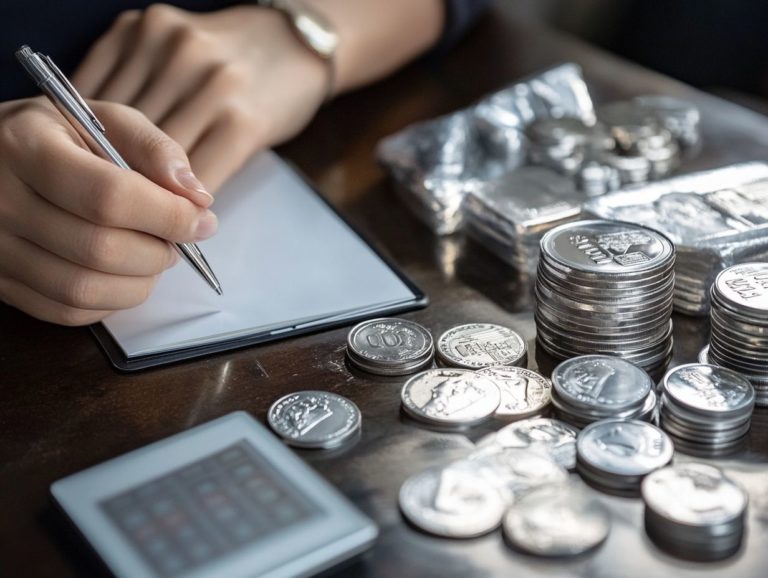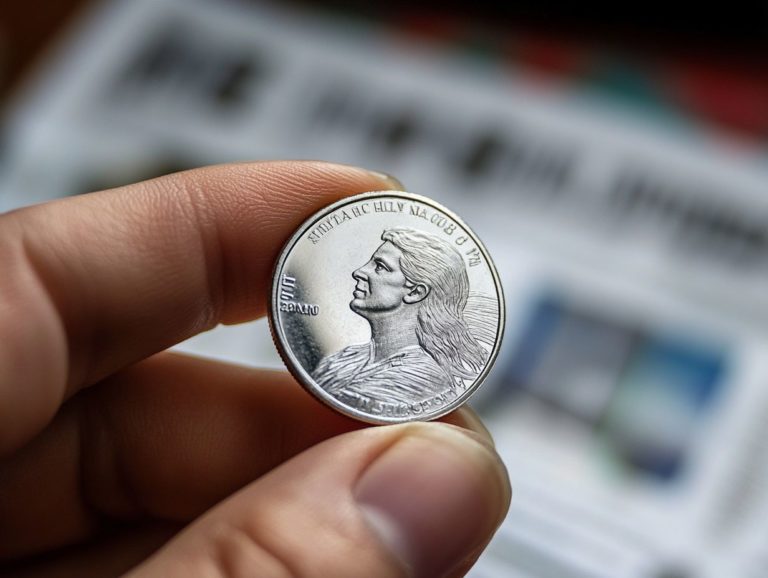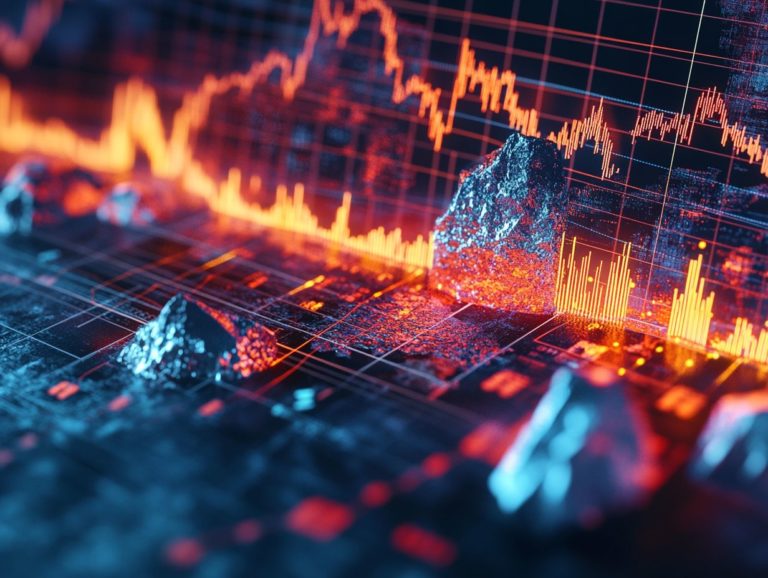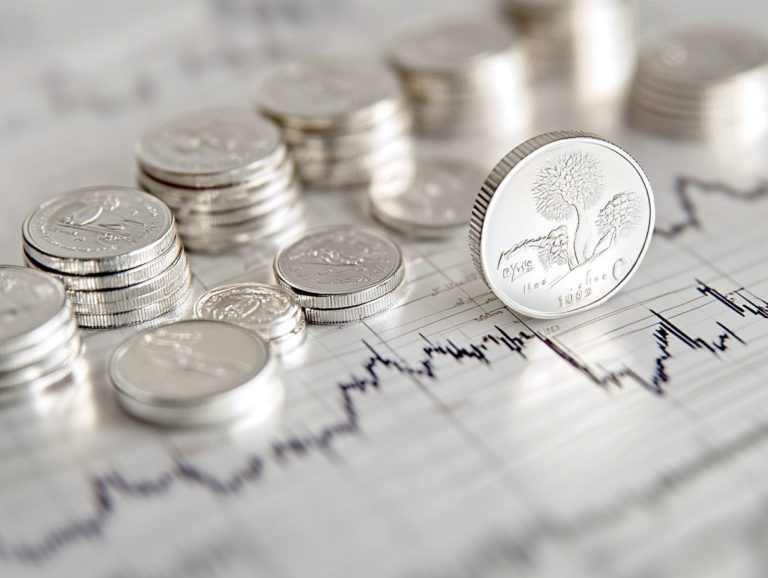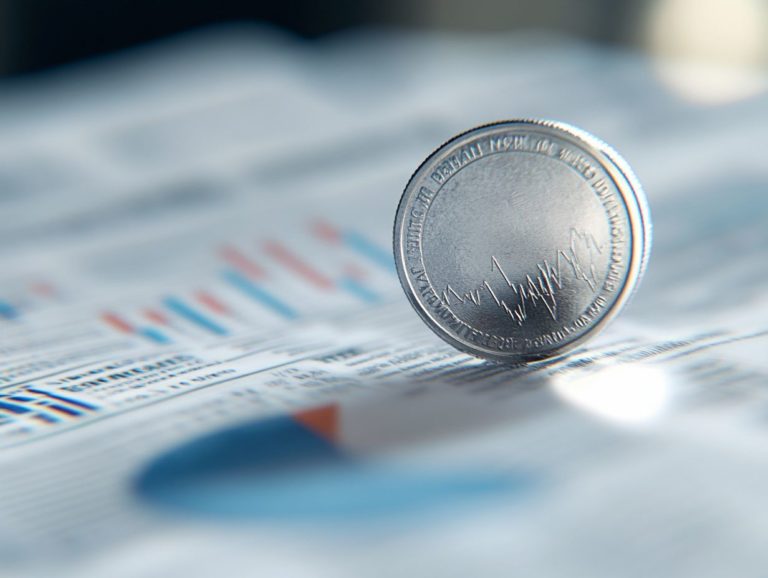How to Analyze Silver Market Reports
Silver has long been an essential player in both the financial market and industrial sectors. By understanding its fluctuations, you can gain insights into broader economic trends.
This exploration delves into the importance of analyzing silver market reports, emphasizing key factors such as supply and demand dynamics, economic indicators, and geopolitical events that influence prices.
It also covers essential tools and techniques for effective analysis, equipping you to interpret data and stay informed in this ever-evolving market.
Jump in now to learn how to make informed investment decisions in silver.
Contents
- Important Points to Remember:
- The Importance of Analyzing Silver Market Reports
- Key Factors to Consider in Silver Market Analysis
- Tools and Techniques for Analyzing Silver Market Reports
- Interpreting Silver Market Data
- Stay Ahead of the Game!
- Frequently Asked Questions
- What are silver market reports and why are they important?
- How can I access silver market reports?
- What should I look for when analyzing silver market reports?
- How do I interpret silver market data?
- Can silver market reports help me make investment decisions?
- Are there any risks involved in relying on silver market reports?
Important Points to Remember:
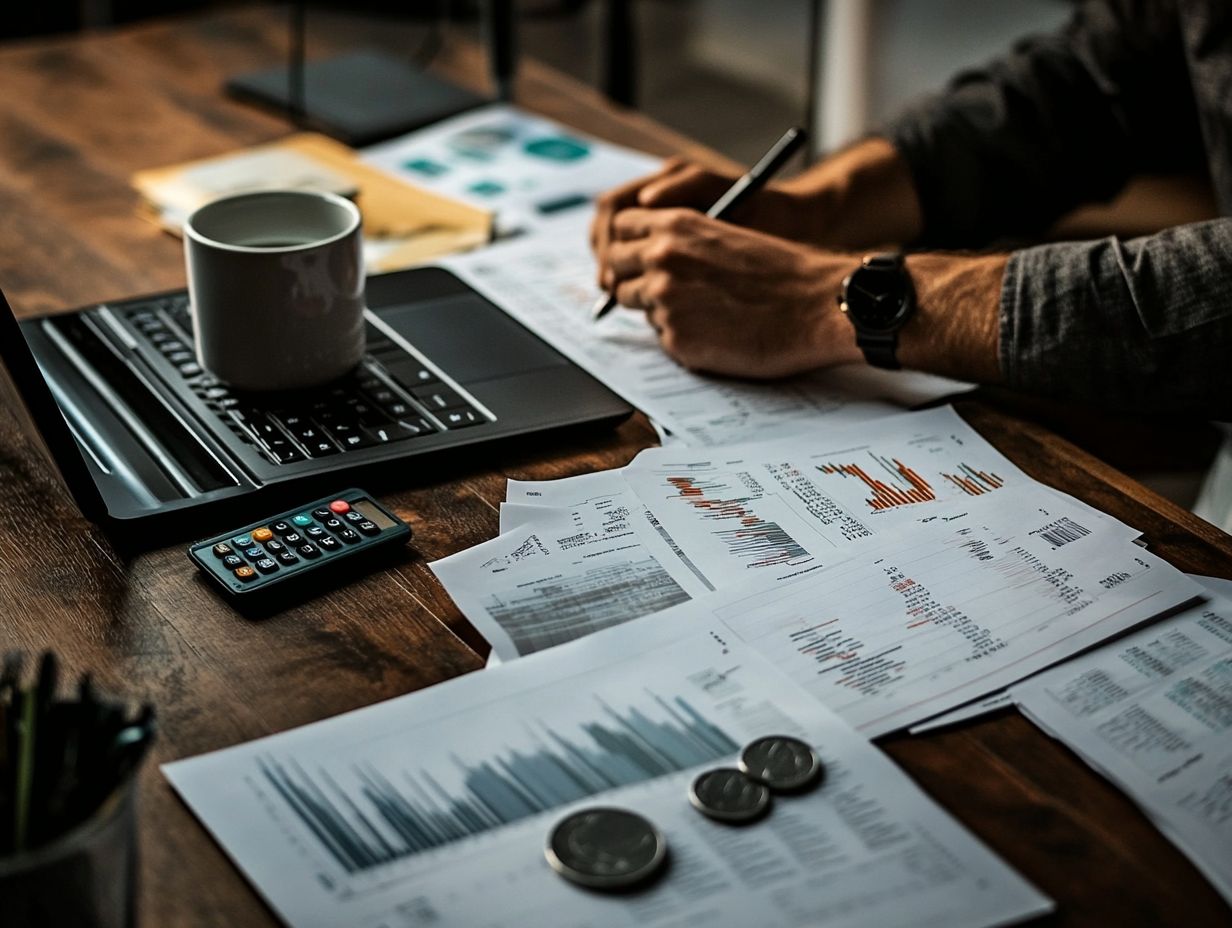
- Understand the significance of silver in the market before analyzing its reports.
- Consider key factors such as supply and demand trends, economic indicators, and political events in silver market analysis.
- Utilize technical and fundamental analysis techniques to interpret silver market data and make informed decisions.
The Importance of Analyzing Silver Market Reports
Analyzing silver market reports is important for understanding how prices work for precious metals such as silver, gold, platinum, and palladium. You should delve into trend analysis, as it provides valuable insights into price movements and potential market behavior elements often influenced by supply and demand, economic conditions, and geopolitical factors.
By engaging in this analysis, you can craft informed investment strategies that resonate with current market sentiment and historical price data, ultimately enriching your investment portfolio.
Understanding the Significance of Silver in the Market
Silver holds considerable value in the market, serving as both a precious metal and a safe-haven asset for those seeking stability amid economic uncertainty.
While gold often steals the spotlight in investment discussions due to its historical significance, silver presents a unique combination of qualities that attracts a diverse array of investors. Its industrial demand, particularly in electronics and renewable energy technologies, distinguishes it as a multifaceted asset. To maximize your investment, it’s crucial to know how to track silver market prices effectively. Silver’s enduring appeal in jewelry consumption captures the attention of consumers who appreciate its luster and affordability compared to pricier alternatives.
Investors are increasingly recognizing silver s importance not only during turbulent times but also as a hedge against inflation. This makes silver an enticing option for anyone looking to diversify their investment portfolios.
Key Factors to Consider in Silver Market Analysis
When you analyze the silver market, it’s essential to consider several key factors that can significantly influence price movements and overall market trends. Pay close attention to supply and demand dynamics, economic conditions, and geopolitical factors that may sway the market.
Each of these elements plays a crucial role in shaping the landscape of silver trading. Knowing these factors will improve your decisions.
Supply and Demand Trends
Supply and demand trends are pivotal in shaping the price of silver, influenced by various factors such as mining production, recycling rates, and industrial applications.
When mining production fluctuates, the balance of available supply can shift dramatically, which in turn affects market prices. Simultaneously, a rise in recycling rates can provide a more sustainable source of silver, impacting the quantity available for industrial use.
The growing demand in industrial applications, especially in sectors like electronics, solar energy, and medical devices, fuels this dynamic even further. Economic factors, including global economic growth and technological advancements, also play crucial roles in this intricate web. As industries innovate and evolve, understanding market sentiment in metals trading becomes essential, as the need for silver could rise, prompting market adjustments and influencing long-term pricing strategies.
Economic Indicators
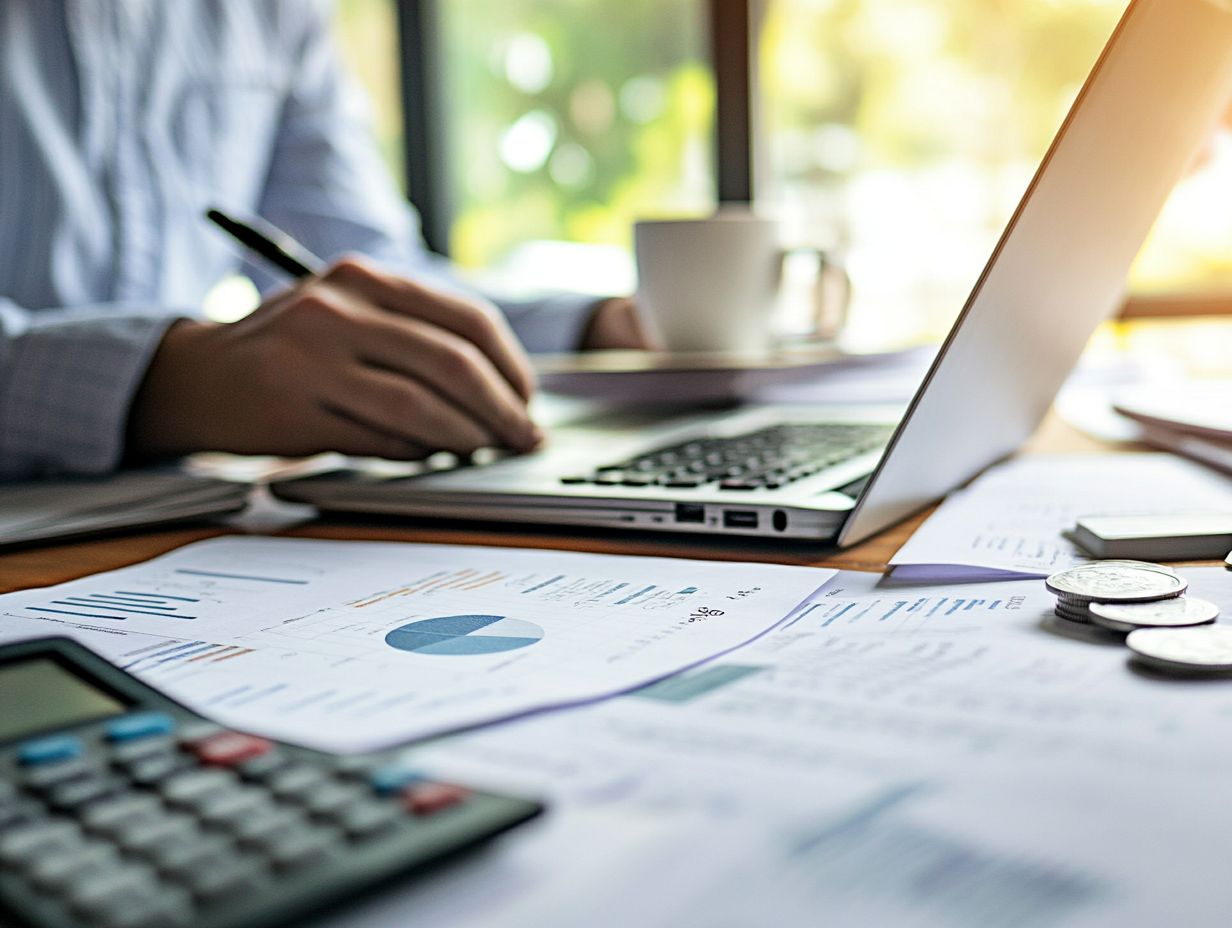
Economic indicators, such as inflation and interest rates, play a pivotal role in shaping the silver market and influencing your investment decisions regarding precious metals.
These fluctuations might prompt you to reassess your portfolio. Often, this leads you to gravitate towards safer assets like silver in times of uncertainty.
The Consumer Technology Association underscores the rising demand for silver in industrial applications, especially within technology-driven sectors.
As advancements in electronics and renewable energy continue to expand, your need for silver in components like smartphones, solar panels, and electric vehicles is set to increase significantly.
This technological surge not only enhances silver’s allure as a store of value but also positions it as a crucial element in the shift towards a more sustainable future. Understanding silver market trends and how these economic indicators interconnect with your broader investment strategies is essential.
Political and Geopolitical Events
Political and geopolitical events, such as trade wars and political instability, can introduce significant volatility into the silver market, profoundly impacting your sentiment as an investor.
When such events unfold, you often find yourself reassessing risk. This prompts a careful reevaluation of your assets and strategies.
In times of uncertainty, silver tends to emerge as a safe haven, showcasing its inverse relationship with high-risk assets.
Market psychology is pivotal in this scenario. Traders respond to news and events not only based on the facts but are also influenced by their emotional reactions.
As geopolitical tensions escalate, sentiment analysis becomes crucial for you to grasp how these external factors affect not only silver prices but also the broader dynamics of the commodities market.
Understanding these factors can help you navigate price fluctuations and make smarter investment choices!
Tools and Techniques for Analyzing Silver Market Reports
To analyze silver market reports effectively, you must leverage powerful tools and techniques to stay ahead in the silver market!
By employing technical analysis, fundamental analysis, and sentiment analysis, you ll gain valuable insights into market dynamics and make more informed investment decisions.
Technical Analysis
Technical analysis is essential for you to grasp price movements in the silver market, using charts and indicators to predict future price movements.
Many traders depend on these methodologies to dissect both past and present market behavior. They hone in on market volatility and pattern recognition to refine their decision-making.
By analyzing historical data with tools like moving averages, Bollinger Bands (which measure market volatility), and the Relative Strength Index (RSI) (which indicates whether an asset is overbought or oversold), you can pinpoint potential entry and exit points. For more insights, learn how to use technical analysis in silver investing.
Chart patterns, such as head-and-shoulders or double tops, act as valuable signals for anticipating shifts in market sentiment. This synergy of price indicators and pattern recognition not only streamlines your daily trading strategies but also boosts your confidence as you navigate the complexities of the silver market dynamics.
Fundamental Analysis
Fundamental analysis in the silver market requires you to assess the intricate dynamics of supply and demand, alongside the broader economic conditions that influence investment demand.
Diving into the specifics of mining production helps you identify potential supply disruptions that may emerge from geopolitical tensions or the depletion of resources.
High levels of jewelry consumption during certain seasons can lead to spikes in demand, subsequently impacting market prices.
In times of economic crises, precious metals often serve as safe-haven assets, enticing astute investors to pivot towards silver as a hedge against inflation. Grasping these interconnected factors gives you the power to make informed investment decisions and significantly enhances your ability to predict market trends with greater accuracy.
Interpreting Silver Market Data
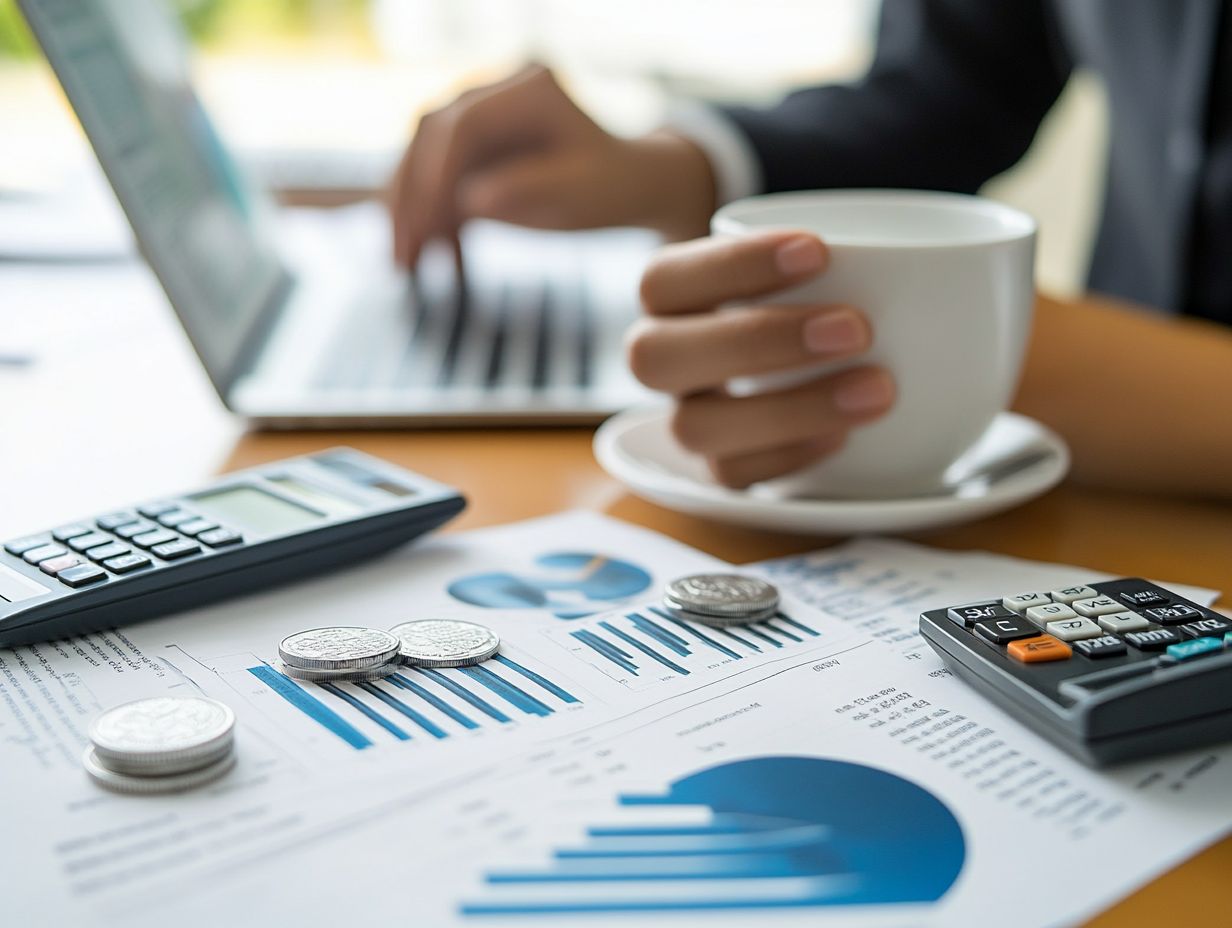
Interpreting silver market data requires a discerning approach, where you analyze various reports and indicators. This analysis enables you to make informed investment decisions based on price trends and emerging market opportunities.
Identifying Patterns and Trends
Identifying patterns and trends in silver market data is crucial for predicting future price movements. This analytical process helps you navigate the unpredictable landscape of market volatility with confidence.
Leveraging historical data uncovers recurring behaviors and signals indicating potential shifts in price dynamics. This insight allows you to recognize bullish or bearish trends and enriches your decision-making process.
As you become proficient in methods to spot trends in data, you enhance your ability to anticipate market reactions and adjust your trading strategies accordingly, minimizing risks associated with fluctuating prices.
Making Informed Decisions Based on Analysis
Making informed decisions through thorough analysis of silver market data can significantly enhance your investment strategies and risk management.
Incorporating both technical and fundamental analysis positions you to adapt to ever-evolving economic conditions. Technical analysis sheds light on historical price movements, helping you predict future trends. Meanwhile, fundamental analysis provides a deeper understanding of factors driving silver prices, such as supply and demand dynamics, geopolitical influences, and macroeconomic indicators (factors like inflation and unemployment rates affecting the economy). Understanding how to analyze silver market sentiment can further enhance your investment strategy.
By capturing shifts in investor sentiment through qualitative and quantitative measures, you gain a comprehensive perspective. This approach ensures you are proactively navigating uncertainties, leading to robust investment decisions.
Stay Ahead of the Game!
Keeping up with the silver market is vital for you as an investor aiming to stay informed about trends, price movements, and emerging opportunities in your investment portfolio.
Monitoring this dynamic market lets you seize advantageous moments and make informed decisions that align with your financial goals.
Sources for Reliable and Timely Information
Identifying reliable sources for timely information is essential for navigating the silver market s ever-changing landscape.
Financial news outlets like Bloomberg and Reuters are invaluable resources, providing up-to-the-minute market analysis that enables you to assess silver’s performance effectively. Websites such as Kitco and Investing.com focus specifically on precious metals, offering insightful charts and forecasts to inform your investment strategies. For deeper insights, consider the silver investment key market indicators provided by industry experts and analysts, which are also crucial for understanding macroeconomic factors shaping market behavior.
By leveraging these trusted sources, you can significantly improve your response to market shifts and make more strategic decisions regarding your silver investments.
Frequently Asked Questions
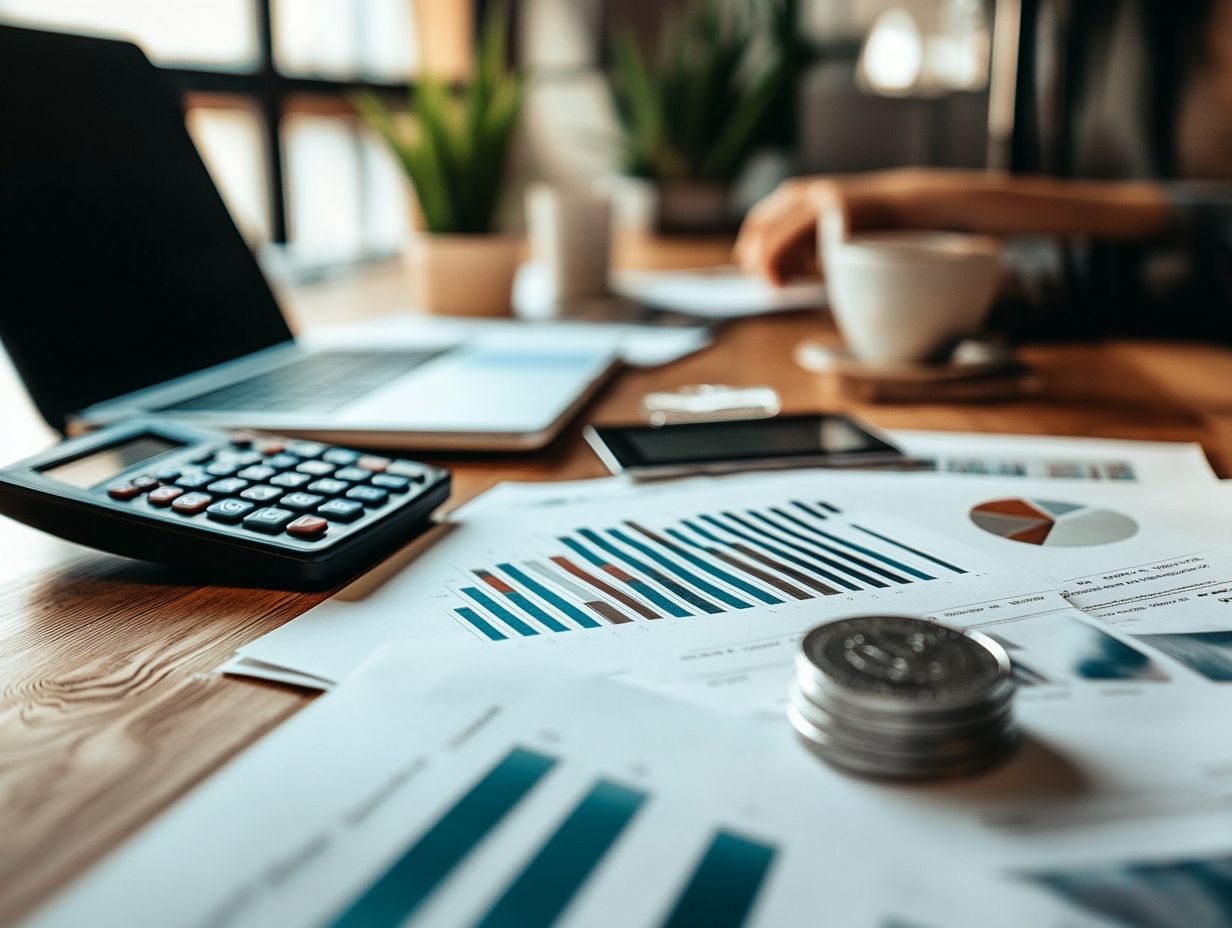
What are silver market reports and why are they important?
Silver market reports provide information and analysis on supply, demand, and price trends of silver. They guide investors and professionals in making strategic buying and selling decisions.
How can I access silver market reports?
Silver market reports are typically published by reputable organizations and can be accessed through their websites or financial news platforms. You can also subscribe to receive regular reports via email.
What should I look for when analyzing silver market reports?
Look for key metrics in silver market reports. Focus on prices, inventory levels, and demand from industries like electronics and jewelry.
Also, watch for geopolitical or economic factors that can impact the silver market.
How do I interpret silver market data?
To interpret silver market data, understand how supply and demand affect prices. Look for patterns and trends that current events may influence.
Can silver market reports help me make investment decisions?
Yes, silver market reports offer valuable insights for investment decisions. Analyzing this data helps you make informed choices about buying or selling silver.
Are there any risks involved in relying on silver market reports?
Relying on silver market reports comes with risks, such as inaccurate or biased information. Use multiple sources and conduct your research to verify the insights.










